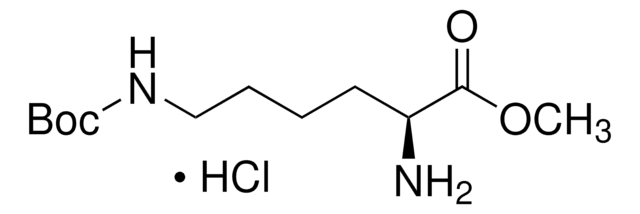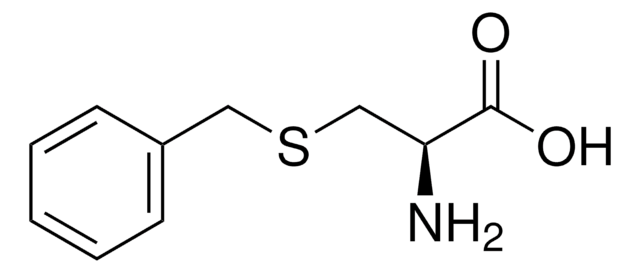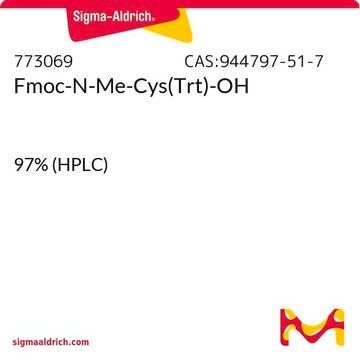467154
N-(tert-Butoxycarbonyl)-L-cysteine methyl ester
97%, for peptide synthesis
Synonym(s):
N-Boc-L-cysteine methyl ester
About This Item
Recommended Products
product name
N-(tert-Butoxycarbonyl)-L-cysteine methyl ester, 97%
Assay
97%
form
liquid
optical activity
[α]22/D +21°, c = 7.5 in chloroform
reaction suitability
reaction type: solution phase peptide synthesis
refractive index
n20/D 1.475 (lit.)
bp
214 °C (lit.)
density
1.143 g/mL at 25 °C (lit.)
application(s)
peptide synthesis
SMILES string
COC(=O)[C@H](CS)NC(=O)OC(C)(C)C
InChI
1S/C9H17NO4S/c1-9(2,3)14-8(12)10-6(5-15)7(11)13-4/h6,15H,5H2,1-4H3,(H,10,12)/t6-/m0/s1
InChI key
NJGIAKIPSDCYAC-LURJTMIESA-N
Application
Storage Class Code
10 - Combustible liquids
WGK
WGK 3
Flash Point(F)
235.4 °F - closed cup
Flash Point(C)
113 °C - closed cup
Certificates of Analysis (COA)
Search for Certificates of Analysis (COA) by entering the products Lot/Batch Number. Lot and Batch Numbers can be found on a product’s label following the words ‘Lot’ or ‘Batch’.
Already Own This Product?
Find documentation for the products that you have recently purchased in the Document Library.
Customers Also Viewed
Our team of scientists has experience in all areas of research including Life Science, Material Science, Chemical Synthesis, Chromatography, Analytical and many others.
Contact Technical Service










